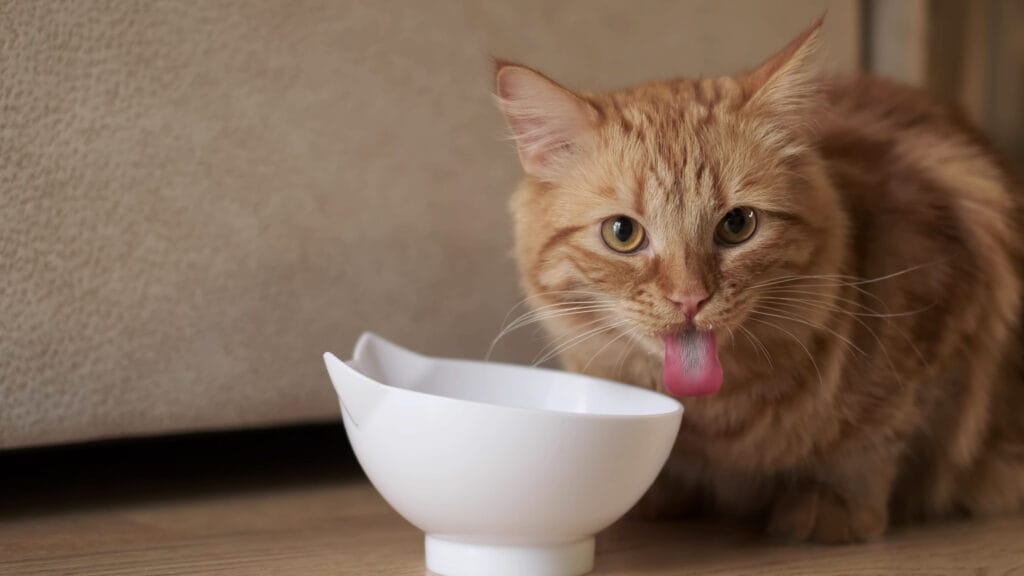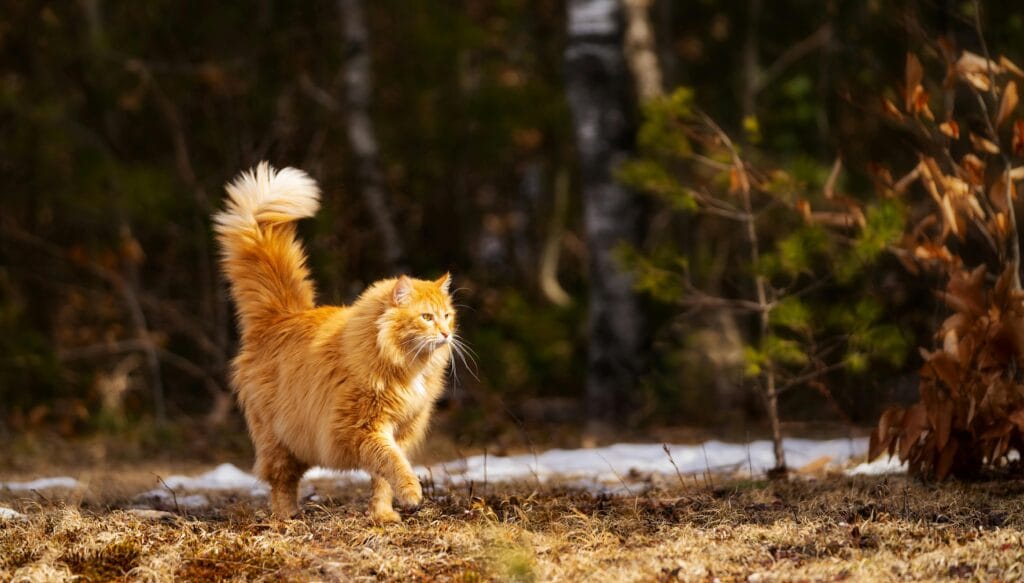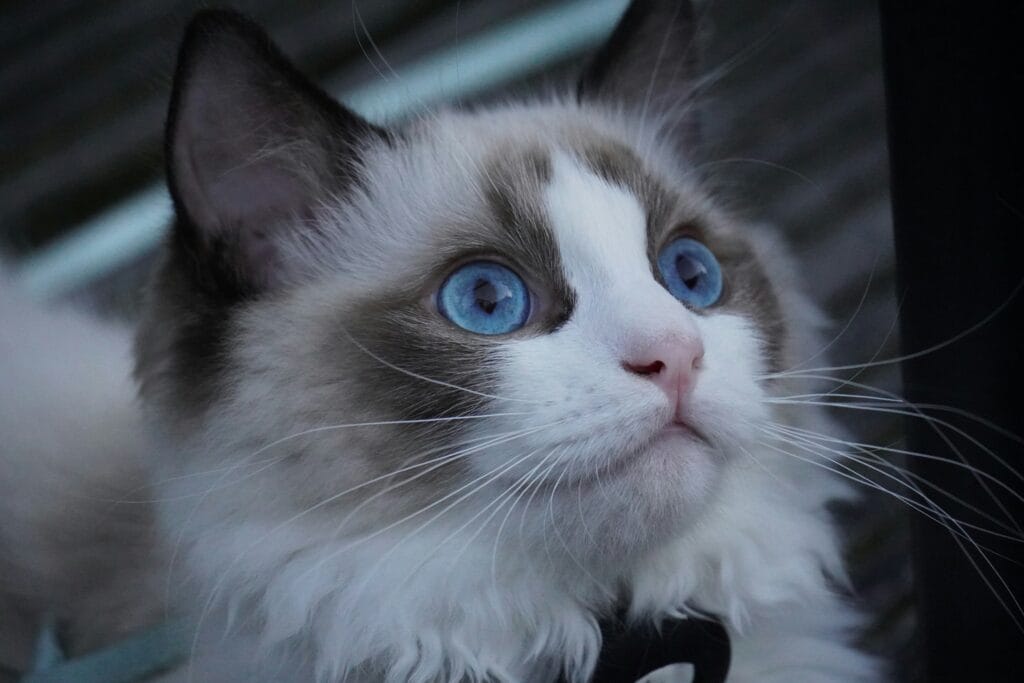Cats are often regarded as mysterious and quirky creatures, but there’s so much more to them than meets the eye!
Whether you’re a lifelong cat lover or just beginning to appreciate these feline friends, you’re bound to discover some jaw-dropping facts that will enhance your understanding and admiration for them.
Let’s dive into these 10 surprising cat facts that might just blow your mind!
1. Cats Have a Unique Way of Communicating with Humans
Cats have a fascinating range of communication methods that help them connect with us.
Here are some key points to understand how our feline friends express themselves:

Vocalizations
Cats primarily meow to communicate with humans, using different sounds to convey specific messages.
A high-pitched meow may indicate urgency, like a request for food or play, while a softer meow can express loneliness or a desire for attention.
This personalized language highlights their intelligence and their ability to form strong bonds with us.
Body Language
Beyond vocalizations, cats also rely on body language to communicate.
A slow blink, often called a “cat kiss,” is a heartwarming gesture that signifies trust and affection.
When your cat slowly closes its eyes around you, it’s a sign they feel safe. You can enhance this connection by returning the gesture.
Tail Signals
A cat’s tail is an important indicator of their mood.
A tail held high signifies happiness and confidence, showing your cat is feeling good.
Conversely, a puffed-up tail can indicate fear or aggression, signaling that they might feel threatened.
By paying attention to these vocalizations and body language cues, you can deepen your relationship with your cat and ensure every interaction is meaningful and special!

2. Cats Can’t Taste Sweetness
Absence of Sweet Taste Receptors
Cats are unique in the animal kingdom because they lack the taste receptors that detect sweetness.
Unlike humans and many other mammals, who have a taste for sugary foods, cats have evolved without the ability to taste sweet flavors.
This trait has developed over time as their diet is primarily composed of meat.
Consequently, while you might savor a sweet treat, your feline companion will show no interest in desserts!
Natural Dietary Preferences
As obligate carnivores, cats have a natural inclination to seek proteins and fats found in meat. Their bodies require these essential nutrients for energy and overall health.
When a cat turns its nose up at sugary foods, it’s not being picky; it’s simply adhering to its instinctual preferences.
Cats are wired to crave the savory flavors of meat, making their dietary choices perfectly aligned with their nutritional needs.
Evolutionary Adaptation
The inability to taste sweetness is a fascinating result of evolution.
Throughout their history, cats have adapted to thrive on a meat-based diet, honing their hunting skills to catch protein-rich prey.
Their ancestors lived in environments where sweetness, typically found in fruits, was not a vital food source.
As a result, cats have evolved to focus on the scents and tastes of meat, which are crucial for their survival.
Understanding these points can help cat owners appreciate their pets’ unique preferences and make informed choices about their diet!

3. A Cat’s Purr Has Healing Properties
The Healing Power of Purring
When your cat curls up next to you and begins to purr, it’s doing more than simply expressing contentment.
Research shows that a cat’s purr, which ranges from 25 to 150 Hertz, can actually promote healing.
This frequency is associated with various health benefits, such as reducing stress, lowering blood pressure, and aiding in tissue repair.
Isn’t it amazing how something as simple as a purr can contribute to our well-being? The vibrations from their purring stimulate growth factors, which can assist in the healing process.
Natural Coping Mechanism
Interestingly, cats often purr when they are injured or in pain, using this soothing sound as a natural coping mechanism.
This instinctual behavior reflects their understanding of the healing properties of their purrs, as the vibrations can help them recover from discomfort and promote overall wellness.
Therapeutic Effects for Humans
The benefits of a cat’s purr extend beyond the feline itself; they can also have therapeutic effects on humans.
The calming sound can help alleviate anxiety and promote a sense of tranquility during stressful moments.
So, the next time you feel overwhelmed, invite your cat for a cuddle.
Let their gentle purr wash over you, reminding you of the special bond between humans and animals.
Cherish these moments—your furry friend is a true wellness warrior!

4. Cats Have a ‘Righting Reflex’
Amazing Falling Ability
Have you ever watched a cat tumble from a height and effortlessly land on its feet?
This remarkable ability comes from their unique skeletal structure and the phenomenon known as the “righting reflex.”
This skill enables cats to twist mid-air, ensuring they often land safely.
When falling, a cat instinctively rotates its head downward, followed by its front and back legs. This swift motion, occurring in mere seconds, helps them position for a safe landing.
Isn’t it fascinating? It’s as if they come equipped with built-in parachutes!
Flexibility and Agility
The righting reflex showcases a cat’s impressive agility, which is largely due to their highly flexible spine.
Unlike humans, cats have more vertebrae in their spine, granting them greater flexibility and the ability to bend and twist with ease.
This flexibility is not only crucial for surviving falls but also plays a vital role in their hunting prowess.
It allows them to make sharp turns and quick movements to catch their prey effectively.
Appreciating Their Skills
So, the next time you see your cat gracefully landing on their feet, take a moment to appreciate their extraordinary capabilities.
The righting reflex is an essential part of what makes cats such skilled and resilient creatures, perfectly adapted to their environment!

5. They Have a Superior Sense of Hearing
Exceptional Hearing Range
Cats have an incredible ability to hear, allowing them to detect sounds as high as 64,000 Hz.
In comparison, humans can only hear frequencies ranging from 20 Hz to 20,000 Hz.
This remarkable ability allows cats to perceive noises that are nearly imperceptible to us, such as the subtle rustle of a mouse or the soft chirp of a bird.
Their evolved sensitivity is essential for their survival as hunters, enabling them to detect high-frequency sounds that play a crucial role in their hunting strategy.
Enhanced Hunting Skills
With their independently swiveling ears, cats can pinpoint sounds and detect movements long before their prey comes into view.
This keen auditory ability gives them a distinct advantage in the wild, making them some of nature’s most efficient hunters.
Their ears can rotate up to 180 degrees, allowing them to hone in on sounds from various directions without moving their heads.
This skill is vital for stalking and capturing prey.
Awareness of Surroundings
Imagine being able to hear a tiny mouse rustling long before it’s near!
A cat’s acute sense of hearing also helps keep them safe from potential dangers, allowing them to detect approaching threats.
So, the next time your cat perks up at a noise, remember they’re tuned into a world of sounds invisible to us, showcasing their remarkable abilities!

6. Most cats spend between 12 to 16 hours each day sleeping.
Sleep for Survival
If you think your cat is simply being lazy, think again!
Cats typically sleep between 12 to 16 hours a day, a behavior deeply rooted in their evolutionary history as hunters.
This extensive sleep pattern helps them conserve energy, enabling them to recharge for those quick bursts of speed and agility needed to catch prey.
Interestingly, cats are crepuscular animals, meaning they are most active during dawn and dusk when their natural prey is also on the move.
So, while they appear to be snoozing throughout the day, they’re actually saving their energy for peak activity times!
Understanding Sleep Phases
During these long slumbers, cats go through various sleep phases, including REM (Rapid Eye Movement) sleep.
This stage is vital for cognitive function and memory consolidation, similar to humans.
You might find it fascinating that cats can dream just like we do!
If you notice your cat twitching or paddling its paws while asleep, it’s likely dreaming about chasing a laser pointer or embarking on a whimsical adventure.
Balance of Sleep and Alertness
Despite their lengthy naps, cats can spring into action at a moment’s notice if something captures their attention.
This remarkable balance between sleep and alertness is a clever adaptation that supports their health and hunting skills, allowing them to be both well-rested and ready for action when the opportunity arises!

7. Cats Can Generate Over 100 Unique Sounds
A Vocal Wonderland
Did you know that cats rank among the most vocal creatures?
Unlike dogs, which have about ten distinct sounds, cats boast the ability to produce over 100 unique vocalizations!
From classic meows and soothing purrs to sharp hisses and cheerful chirps, cats have developed an impressive range of sounds to express their emotions and communicate with both humans and other animals.
Each sound conveys specific messages, influenced by context and tone. For example, a high-pitched meow often signals hunger, while a prolonged meow may request attention or affection, inviting you to cuddle.
Tailored Communication
Interestingly, cats often adjust their vocalizations to engage specifically with humans.
Many develop a unique “call” reserved solely for their owners, distinct from the sounds they make with other cats.
This personalized communication emphasizes the special bond they share with their human companions, showcasing their intelligence and adaptability.
Vocal Versatility
Beyond meows, cats express themselves through various sounds.
A gentle purr usually indicates contentment, a hiss signifies discomfort, and chirps reflect excitement—especially when they spot a bird.
This vocal versatility highlights their unique personalities and strengthens the connection between cats and their humans.
So, when your feline friend starts chatting, listen closely; they may be sharing their thoughts and feelings with you!

8. Whiskers Are More Than Just Cute Features
Essential Sensory Tools
Whiskers, also known as vibrissae, are more than just adorable features on your cat’s face; they play vital roles in their survival!
These long, stiff hairs are packed with sensitive nerve endings that provide crucial sensory information about their environment.
Each whisker can detect even the slightest changes, helping cats navigate their surroundings effectively.
Whiskers are typically about as wide as a cat’s body, which aids in spatial awareness.
This is especially helpful when approaching narrow spaces, allowing cats to gauge whether they can fit through without getting stuck.
Enhanced Hunting Skills
Whiskers are incredibly sensitive to air currents, allowing cats to detect subtle movements nearby.
This heightened sensitivity enhances their hunting skills; if a mouse scurries or a bird flutters in the vicinity, cats can sense these changes without needing to see the source.
This instinctive ability helps them be successful hunters, as they can react quickly to potential prey.
Nighttime Navigation
As crepuscular animals, cats are most active during dawn and dusk when light levels are low. Their whiskers play a crucial role in helping them “see” in the dark, enabling safe and efficient movement.
So, the next time you notice your cat’s whiskers twitching, remember they’re gathering vital information about their surroundings!

9. Cats Have a Strong Territorial Instinct
Claiming Their Space
When your cat claims a favorite chair or a sunny spot, you’re observing their natural territorial instinct in action.
This behavior is deeply rooted in their wild ancestors, who had to secure hunting grounds to survive.
By staking their claim, domestic cats ensure they have a safe and familiar environment in which to thrive.
Scent Marking
Cats primarily mark their territory through scent, utilizing specialized glands located around their cheeks, paws, and tail.
When they rub against furniture, walls, or even you, they’re leaving behind their unique scent, signaling to other cats that this space is theirs.
This behavior is not merely an affectionate gesture; it’s a way for them to establish boundaries and create a secure environment.
Understanding Marking Behavior
Marking behavior is essential in a cat’s life for various reasons.
Besides rubbing, cats scratch surfaces to maintain their claws and deposit scent from glands in their paws.
They may also resort to urine marking, particularly when feeling threatened or when a new cat is introduced to their territory.
Understanding these behaviors can help foster peaceful coexistence with other pets or new people, revealing fascinating insights into their ancestral instincts.
So, when you see your cat confidently strutting and rubbing against furniture, know they’re proudly claiming their space!

10. They Have a Unique Walking Style
A Distinctive Gait
Have you ever noticed your cat’s unique walking style?
Cats employ a distinctive “pacing” gait, where the front and back legs on one side move in unison.
This method of locomotion is not only efficient but also incredibly quiet, allowing them to sneak up on potential prey without making a sound.
This silent approach is a crucial evolutionary adaptation that enhances their hunting prowess.
The Importance of Stealth
Unlike many other animals that may alert their prey with noisy footsteps, cats are adept at moving stealthily.
Their padded paws are specifically designed to absorb sound, making them some of the quietest hunters in the animal kingdom.
This remarkable skill allows them to stalk their targets with precision and patience, increasing their chances of a successful hunt.
Agility and Balance
Beyond their silence, a cat’s pacing gait significantly contributes to their balance and agility.
With a flexible spine and a low center of gravity, cats can navigate various terrains with ease. This efficient walking style enables them to make quick adjustments in speed and direction, making them incredibly agile.
Their leg coordination improves stability, allowing them to spring into action effortlessly, whether they’re chasing a toy or evading a threat.
So, the next time you see your cat glide gracefully across the floor, remember that this unique walking style is a finely tuned trait evolved for expert hunting!
The Purrfect Wrap-Up
Cats are truly remarkable animals, full of surprises and wonders that continue to amaze us.
From their unique communication styles to their extraordinary physical abilities, these furry companions are more than just pets; they’re fascinating beings with a rich history.
So, the next time you find yourself watching your cat, remember that there’s a lot more going on than meets the eye!
What is a surprising fact about cats’ ability to communicate?
Cats meow specifically to communicate with humans, not other cats.
How do cats’ whiskers help them in the dark?
Cats’ whiskers help them navigate by detecting changes in air currents.
Are cats really more independent than dogs?
Yes, cats are more independent and enjoy solitude.
Do cats have a “favorite person”?
Yes, cats often form strong attachments to one person.
Why do cats knead with their paws?
Cats knead for comfort and to mark their territory.


Hey! Someone in my Facebook group shared this site wth us so I came to give
it a look. I’m definitely enjoying the information.
I’m book-marking and will be tweeting this to my followers!
Great blog and outstanding style and design. http://Boyarka-inform.com/
Hey!
Thank you so much for your kind words and support!
I’m really glad you found the site helpful.
Appreciate you bookmarking and sharing it with your followers!
Stay connected — more awesome content is on the way!
Great info. Lucky me I found your site byy chance (stumbleupon).
I have saved as a favorite ffor later! https://weneedyou.Stepzo.in/companies/bubinga-options-com/